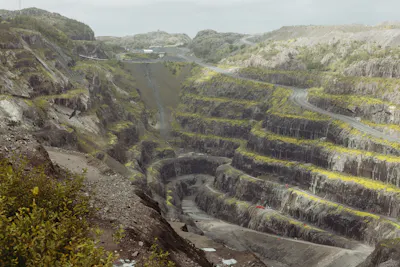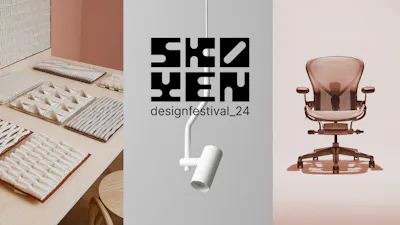Carlos Sfeir on design as a Trojan horse

In a mini series of short interviews, Maren Bang of the Elementa crew presents the work of some of her fellow alumni from Design Academy Eindhoven.
What is the potential for art and design to work as a Trojan horse, bringing about positiv change in conventional systems? Carlos Sfeir is a Chilean architect, designer and artist currently based in Berlin. His work explores the power of the poetic, forces of nature, and the consequences of colonialism. Carlos started working on projects specifically focusing on Chile as topic at the same time as the social outbreak started in 2019. During our conversation he described the feeling of being in the Netherlands, not able to do anything and watching the revolution from a distance. Working with Chile as a theme in the different ways which he has throughout the Master’s became a way to address and process the conflict and relate to it through the means he had at the time.

# I noticed a picture you posted Instagram, of one of your projects which I believe has to do with the wind somehow? Is that correct?
It is basically a way of rereading certain structures which are already in the landscape of Chile. We have this big dry dessert, these big wet clouds, and the plants in the valleys waiting for the clouds to come so that they might catch some drops. So the people build something called a Atrapanieblas - a fog-catcher. It is this big screen made up of cloths, which are waiting for the cloud to hit them and to condensate the drops and harvest them.
My piece is called the Atrapavientos - the wind-catcher. In summertime, the valley which is surrounded by mountains gets heated up, and the heat starts going up towards the Andes, circulating in a flow. The windcatcher is made from really simple materials, which is another element present throughout all my projects - I always work with materials which are really cheap. To me that is a central part of my practice, to convert domestic objects into something greater. In this case they were just plastic-bags, attached to each-other, following a certain pattern, both catching the wind, but also letting the wind go through. The Atrapavientos breathes, with the flow of the wind.

I think that emphasizes your talent for visually and poetically translating something abstract or invisible, in this instance a natural phenomenon, into something tangible. But there are also more critical and political aspects to some of your works. I sometimes get the feeling that you are, consciously or not, disrupting conventional frameworks through artistic means - like a Trojan horse.
I like how you describe it! I think I always want to break the system somehow. To annoy a bit - which can be seen as pretentious, but at the same time I do want to trigger something. Poetry has the power to address complex topics, sneaking in the underlying meanings that in a system remain untold.
I think this is the perfect example of your way of storytelling, through all that you do. I want to talk about a section from one of your written works: “I am in conflict, I am the conflict. I am the faggot and the cuico. I am the Chilean and the Spaniard, the oppressed and the oppressor. I come from colonization, but I celebrate our cultures, I celebrate our lands. I embrace within my bodies, as well as in my souls, both the Real and the Realism. I am the Tinku. Andes Mountain Range I am.” Cuico =snob Tinku = meeting/encounter
Yes. This is the peak of the text and the peak of the conflict. It is the question of “who is me”, the struggle and the feeling that “I can’t handle it any more”. There is all this history, and I was born into this context, and now I am dealing with something that I have no idea how to deal with. “I am the Tinku”, is the reconciliation, and emancipation of the problem. Like embracing the duality as something powerful, but also as an eternal internal fight.

In addition to being a craftsman with words, I also know you as a hands-on guy, with an extensive interest in different materials. Copper plays a leading role in your graduation-project - how (and why) is that?
Yes, during the work with the project I travelled to the Atacama desert, and stayed there for three weeks, and while I was there I visited the copper mines. As I write in my Thesis;
“Coppers pophyris have a concentration of about 1%. This means that to obtain 10kg of pink metal, at least 1 tonne of Andes has to be blown up. It is a living massacre. In the deeper deposits, minerals are found as copper sulphides, while in those closer to the surface, they inhale oxygen and carbon dioxide, forming copper oxides and carbonates. Copper touches Atmosphere and breathes the air we sigh. The native people never traded anything with coins - so what does it have to do with them? Here again is the tension, the contrast between these two forces. Basically, the Spanish came and they needed to trade the way which the Spanish traded, which was with coins. The natives, on the other hand was exchanging woods, tools etc. But for the Spaniards to have food, they paid with coins, so now the natives had all these silver coins, but they never used the silver coins as a currency like money, they understood it as silver - as a metal.”
What I love about that, is that ontology-turn around the same thing. Which is the same thing which I wanted to mimic with working with the coin, as not an economical currency but as an energetic and material currency. On one of the coins in Chile, there is a native woman with a traditional headpiece made of the coins - which they at the time saw simply as silver - and on the other side of the coin is the republic of Chile. In Spanish we have this expression that you have to look at the other side of the coin - to see a thing from another perspective. Here you have the republic on the one side, and you have the native and the ancestral beliefs on the other- literally clashing in a coin.
And then Carlos took me through a journey (on Google Maps). He showed me his route through the dessert and pictures from the different locations, creating vivid mental images of the variety of the Atacama desert. Listening to him, is hearing someone totally in love with the landscape around him, fascinated with all phenomena occurring on his journey, examining the sometimes harmonic, other times problematic connections and reactions between nature and man.

As a part of his graduation project, Carlos created an enormous, black dome which was exhibited with the rest of the graduation projects during Dutch Design Week. As he notes; “Two circles of technical fabric sewn together and inflated creates a dark and mysterious space. Two slits, hidden between the folds of the fabric, lead to the interior, where a suspended fan lets a zenithal light come in. The shape, size and performance of the Breathing Camera Obscura are calibrated so that the weight of the material and the one of the fan are counterbalanced by the pressure of the air captured in the fabric.”



“Accompanying the dome, “La [Re]constitución de los Andes”, shows how the cultural, economic and environmental issues of copper mining can be reinterpreted and reversed in light of the current socio-political situation in the territory known as Chile. By recreating the electrochemical processes used to purify the stones in the pits, a new form of copper ore aggregates into crystalline formations that undermine both our notions of nature and artifice, magic and reason, oppression and resilience. A rusted metal structure supports a large glass vessel filled with copper sulphate. At the bottom of the container, a few cents have been thrown. A circuit comprising a battery and an amperometer pulls the copper particles covering the coins into an electronic flow towards a large copper tube, also immersed in the solution. Slowly, all around the metal tube, crystalline formations materialise. Once harvested and left to react with the salty water surrounding the installation, the particles mineralise in a verdant colour, evoking the natural appearance of the orebodies that constitute the Andes Mountain Range.”









